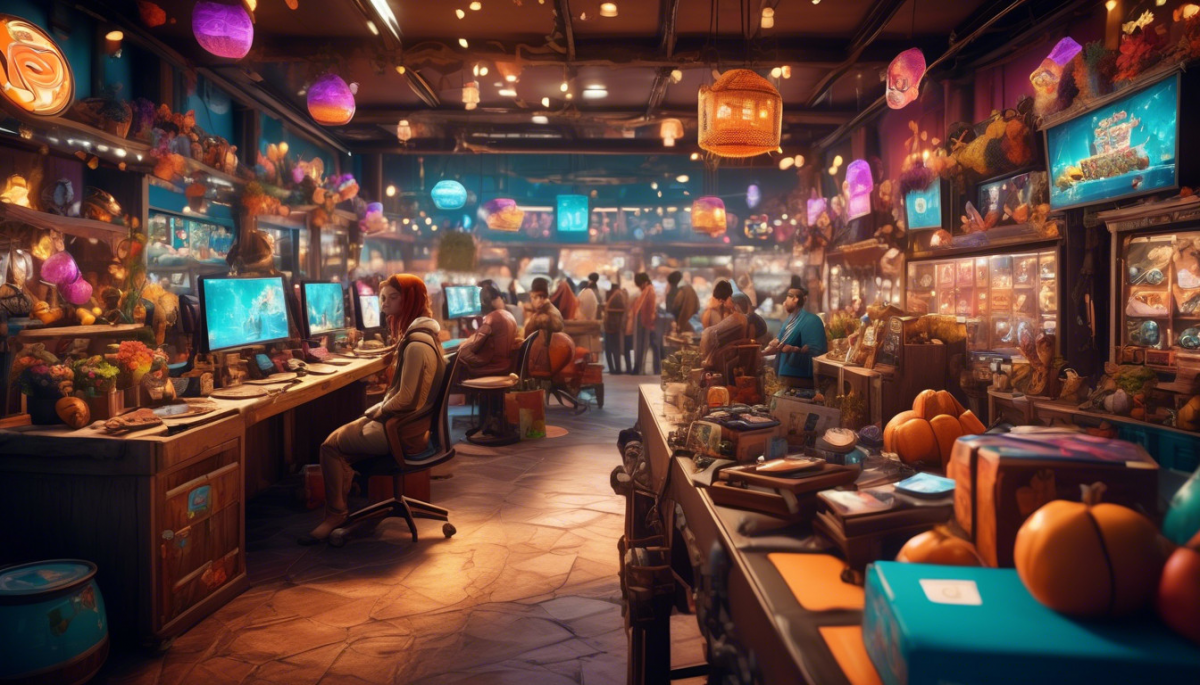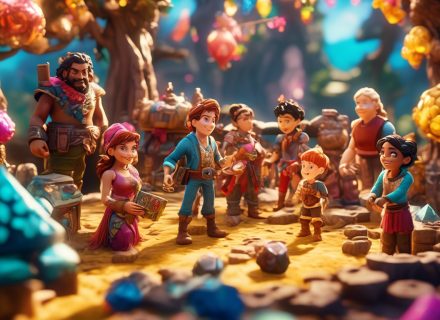The rapidly evolving landscape of digital entertainment presents numerous opportunities for game developers to broaden their audience reach by venturing into web-based platforms.
As the internet becomes an increasingly integral part of daily life, leveraging its expansive reach can significantly enhance the visibility and accessibility of gaming experiences. Developing for the web allows games to be played instantly without the need for downloads, thus attracting a wider audience, including casual gamers who may prefer quick, accessible experiences.
Furthermore, the web’s cross-platform capabilities enable games to be played on various devices, from desktops to mobile phones, ensuring a seamless user experience across different operating systems. This adaptability not only increases potential engagement but also paves the way for:
- Innovative monetization models
- Community-building strategies
By extending their reach to the web, game developers can harness these advantages to create compelling, inclusive experiences that resonate with diverse audiences worldwide.
To explore more about how these strategies can revolutionize your game’s reach, this link will take you further into the realm of web-based gaming innovations.
Benefits of Web-based Gaming
Web-based gaming offers numerous advantages, including:
- Easy accessibility
- Cross-platform compatibility
Technological Capabilities:
- Developers can harness the power of WebGL and HTML5 to create engaging, high-performance games directly in a web browser.
- WebGL enables the delivery of sophisticated graphics and smooth gameplay, significantly enhancing user experience.
- HTML5 offers a flexible framework that supports multimedia elements without the need for additional plugins, ensuring seamless access across various devices.
Monetization Opportunities:
- Web-based gaming opens lucrative opportunities through microtransactions.
- Players can purchase virtual goods or enhancements within games.
- This strategy supports the financial sustainability of gaming projects.
- It fosters player engagement by offering personalized experiences.
Community and Innovation:
- By utilizing the web platform, developers can reach a broader audience.
- This creates communities that thrive on shared gaming experiences.
Conclusion:
Web-based gaming plays a pivotal role in modern game development by driving innovation and accessibility in the gaming industry.
Cross-platform Compatibility
Cross-platform compatibility ensures that games can be seamlessly accessed and played across various devices and operating systems without compromising performance. This adaptability is crucial in cultivating a unified gaming community, fostering a sense of belonging among players, regardless of their platform of choice.
Technologies for Cross-Platform Development:
-
Utilizing technologies such as WebGL and HTML5, developers can create games that deliver consistent experiences across web browsers, desktops, and mobile devices.
-
These technologies enable high-quality graphics and smooth performance without requiring downloads or installations.
WebGL and HTML5:
-
WebGL: A JavaScript API that allows developers to render interactive 2D and 3D graphics within web browsers, enhancing visual fidelity.
-
HTML5: Supports multimedia content, ensuring games maintain functionality across diverse environments.
Combined, these technologies create a robust framework for developing versatile gaming experiences.
Microtransactions:
- The inclusion of microtransactions further enhances the cross-platform model, offering players the flexibility to make in-game purchases seamlessly across devices.
By embracing these technologies, developers can ensure their games reach wider audiences, promoting inclusivity and engagement within the gaming community.

Monetization Opportunities
Monetization opportunities in web-based game development are abundant, offering developers innovative ways to generate revenue while enhancing player engagement. Leveraging technologies such as WebGL and HTML5, developers can create visually rich and interactive gaming experiences directly in browsers, eliminating the need for plug-ins. This seamless accessibility broadens the potential player base, increasing the likelihood of monetization success.
Microtransactions are an effective method of monetization. They allow players to:
- Purchase in-game items
- Enhance gameplay
- Access exclusive content
These small, frequent transactions can significantly increase revenue while maintaining an inclusive gaming environment.
Subscription models offer continuous revenue streams by providing:
- Premium content
- Features in exchange for a regular fee
Advertising partnerships present another lucrative avenue. In-game ads or sponsored content can be integrated without disrupting the user experience.
By thoughtfully combining these monetization strategies, developers can craft sustainable revenue models that support the growth and longevity of their web-based games, fostering a sense of belonging within the gaming community.

Community Engagement Strategies
Engaging the gaming community effectively involves implementing strategic initiatives that foster interaction, loyalty, and collaboration among players.
Utilizing WebGL and HTML5 technologies can enhance accessibility and performance, ensuring seamless experiences across various devices. These tools allow developers to create visually engaging content that captivates players, encouraging continued participation and community building.
Interactive forums and social media platforms can serve as venues for players to share experiences and provide feedback, strengthening the sense of belonging within the community.
Incorporating microtransactions thoughtfully can support community engagement by offering players the opportunity to customize their gaming experience. These transactions, when executed with transparency and fairness, can enhance player satisfaction and loyalty.
Regular updates and events, enabled by the flexibility of HTML5, keep the community active and invested.
Fostering collaboration through user-generated content and competitions can stimulate creativity and camaraderie among players.
These strategies, when integrated effectively, can significantly enhance the overall gaming experience and promote a thriving, engaged community.



